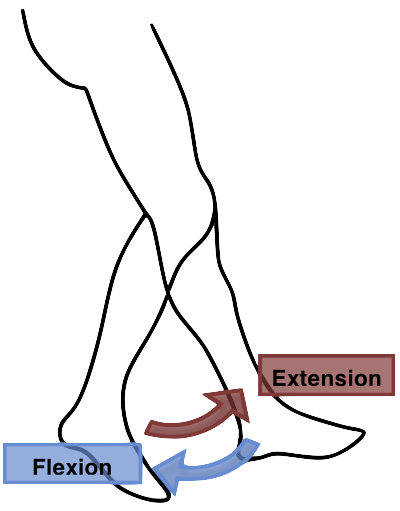Dynamic Footrest Hangers – It’s All In The Design
 Michelle L. Lange, OTR/L, ABDA, ATP/SMS
Michelle L. Lange, OTR/L, ABDA, ATP/SMS
Allowing movement at the knee is more complicated than it sounds. When a client extends at the knee, this movement is not just in one plane. In other words, the foot doesn’t simply slide forward. The foot follows an arc, forward and upward.
The Right Component And The Right Movement
In order to facilitate knee extension and a return to a starting position, the dynamic component must follow this rotational movement. If the component does not follow this movement, and at the correct pivot point, the mechanism may “jam” and movement will not occur. Selecting the appropriate dynamic component and correct mounting are essential. The Seating Dynamics dynamic footrests are designed to match these requirements and elevate 30 degrees past the starting position.
For Clients Who Press Downward
Many clients begin this movement by pressing downward. This downward movement may be seen without much forward movement, particularly in clients with tight hamstrings. The dynamic component must lengthen, or telescope, to absorb this movement and return to the starting position. All Seating Dynamics dynamic footrests include a telescoping feature which lengthens the footrest hanger by 1.5”, absorbing downward forces, and then guides the foot back to the starting position. Combined with the optional knee extension feature, telescoping allows smooth and true knee extension, as these features provide elevation and articulation (telescoping) simultaneously.
Movement At The Ankle
Plantar / Dorsi Flexion
The client may move at the ankle into dorsiflexion (toes to ceiling) or plantarflexion (toes to floor). Plantar flexion is commonly seen in conjunction with knee extension. By adding the optional plantar / dorsi flexion feature, ankle movement is absorbed, rather than force increasing over the ball of the foot, and the heel lifting off the footplate.
Rotating Footplates
When the lower extremity is extended, external rotation may be present, leading to the feet turning outward. The optional rotating footplates rotate outward in response to client forces and then return to a set starting position.
As in all wheelchair seating, angles are very important in meeting our client’s needs. Dynamic seating angles are equally important in providing an effective solution.

Because people with physical disabilities tend to be sedentary much of the day, as caregivers we need to look for seating that allows for movement.
Thanks for your comment, we agree!